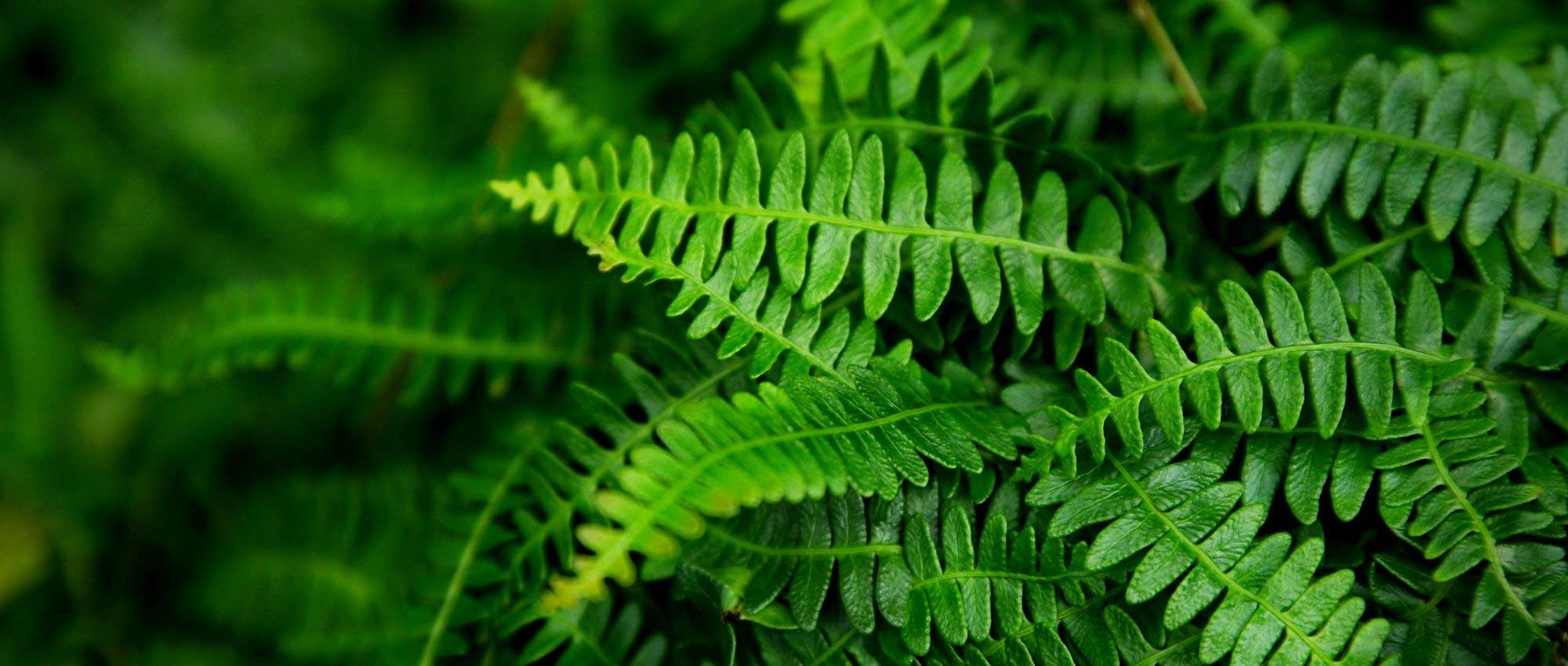
Blechnum: planting, growing, and care
Contents
Blechnum in a nutshell
- Blechnums are evergreen ferns that bring an exotic touch to the garden
- Not very common in gardens, these original ferns deserve to be cultivated more
- Some of them are perfectly hardy!
- We appreciate their original and graphic fronds, elongated and divided into fine segments
- They will thrive in a cool, shaded corner of the garden
A word from our Expert
Blechnum are stunning evergreen ferns that deserve to be more widely cultivated in gardens! The most common is Blechnum spicant, which can also be found in the wild in France. The Blechnum penna-marina stands out with its very small fronds, compact size (it does not exceed 20 cm in height), and spreading habit, making it a good groundcover. This is in stark contrast to the Blechnum novae-zelandiae, which impresses with its size, reaching up to 60 cm in height and 1.5 m in spread! It is ideal for creating a lush and very exotic atmosphere! These three Blechnum have the advantage of being quite hardy, as they can withstand temperatures between -10 and -20 °C. Their fronds are unique, different from most ferns. They are very elegant ferns, with delicately cut foliage. Moreover, they are evergreen plants that retain their foliage in winter, remaining decorative throughout the year!
In the garden, Blechnum will thrive in a shaded spot, in cool, humus-bearing, slightly acidic soil. You can plant them in a woodland garden to create a very natural atmosphere, alongside other shade plants: hostas, Solomon’s seal, sweet woodruff, Geranium nodosum… Feel free to plant them alongside other ferns, such as Dryopteris or Athyriums. Blechnum will also find their place in a shaded, cool rockery. Once established, they require almost no maintenance, apart from occasionally removing damaged fronds and watering during dry spells.
Discover all our tips for successfully cultivating Blechnum: which variety to choose, where and when to plant them, how to propagate them, and which plants to associate them with!
Botany
Botanical data
- Latin name Blechnum sp.
- Family Blechnaceae
- Common name Blechnum, Pectinate fern
- Flowering None
- Height between 10 and 50 cm
- Exposure shaded
- Soil type cool, humus-bearing, rather acidic
- Hardiness between -10 and -20 °C
Blechnum comprises around 140 species of evergreen, rhizomatous ferns, native to temperate and tropical regions. Most are from New Caledonia, but some species can also be found in South America (such as Blechnum brasiliense and Blechnum chilense, from Brazil and Chile), Australia, and New Zealand (Blechnum novae-zelandiae)… The Blechnum spicant grows wild in France, across much of the metropolitan territory, as well as in North America and Asia. It thrives in forests, on humus-bearing, permeable, and rather acidic soils.
Blechnum belong to the large group of Pteridophyta, which includes ferns, horsetails, and lycopods. These plants share the characteristic of reproducing by spores, rather than producing flowers and fruits. They are primitive plants that existed long before flowering plants! The oldest ferns appeared nearly 400 million years ago, even before the dinosaurs! Ferns depend on water for reproduction, which is why they are mainly found on cool or moist soils, sometimes near watercourses.
Some species of Blechnum are hardy enough to be grown outdoors. This is particularly true for Blechnum spicant, Blechnum penna-marina, and Blechnum novae-zelandiae. The Blechnum penna-marina can withstand temperatures down to -20 °C. In the wild, it grows in alpine meadows, sometimes at altitudes over 1000 m, and can tolerate being covered by snow. The Blechnum spicant can grow up to 2500 meters in altitude and is hardy down to -25 °C.
Other, more tender species of Blechnum are typically grown as houseplants: notably Blechnum brasiliense and Blechnum gibbum.
Blechnum have given their name to the family Blechnaceae, which includes nearly 220 species. This family also contains the genus Woodwardia, which is also cultivated as an ornamental fern.
The name Blechnum comes from the Greek Blechnon, which formerly referred to ferns. The species name spicant comes from the Latin spica, meaning spike. It is also known in French as Blechnum en épi. The Blechnum spicant is sometimes referred to as Struthiopteris spicant. The species name penna-marina means “sea feather” in Latin, as the fronds of this fern resemble marine animals called pennatules or sea feathers.

Blechnums can take on very varied forms: Blechnum gibbum is arborescent, Blechnum novae-zelandiae forms tufts (photo Krzysztof Ziarnek), and Blechnum penna-marina grows in carpets (photo Daderot)
Blechnum have rhizomes covered with brown scales, which can be erect or running. Many species have a running rhizome: this is particularly true for Blechnum spicant and Blechnum penna-marina. These ferns therefore spread over time. This characteristic is easily noticeable in Blechnum penna-marina, which forms a true carpet of small leaves, thanks to its highly branched rhizome! When the rhizome is erect, the plant can form a small stipe (like a “trunk”), taking on an arborescent form!
Blechnum vary greatly in size depending on the species. The Blechnum penna-marina is one of the smallest, measuring only between 10 and 20 cm in height. However, it spreads quite easily and forms a beautiful groundcover. The Blechnum spicant reaches between 20 and 50 cm in height, with a spread of 60 cm. It has short rhizomes that spread slowly. The Blechnum novae-zelandiae is much larger, reaching up to 60 cm in height and 1.5 m in spread in our climates, while in its native habitat, the fronds can reach up to 2 meters long!
There are even arborescent Blechnum! This is the case, for example, with Blechnum tabulare and Blechnum gibbum, which form small stipes reaching up to 1 m in height! The Blechnum tabulare can withstand temperatures down to -5 °C, and can therefore be planted outdoors in regions where the risk of frost is low, while Blechnum gibbum is more suited for indoor cultivation.

The fronds of Blechnum spicant, Blechnum novae-zelandiae (photo Muriel Bendel) and Blechnum penna-marina
Like other ferns, Blechnum do not produce flowers or fruits. Instead, they produce spores.
For Blechnum, as with other ferns, we do not refer to leaves but to fronds. Blechnum have two types of fronds: sterile, evergreen fronds, and fertile fronds, which bear the spores, appearing in summer. These initially curl up in croziers, then gradually unfurl. The young fronds of Blechnum penna-marina and Blechnum novae-zelandiae have beautiful reddish, coppery hues before turning green. Similarly, Blechnum brasiliense, grown as a houseplant, has young fronds of bright red colour.
The fronds of Blechnum are thick and relatively leathery. They are elongated, and generally, the lamina is once divided, forming regular pinnules. The Blechnum spicant has long, dark green fronds that are quite narrow. They measure between 15 and 50 cm in length. They are gathered in tufts and have 20 to 60 pairs of segments. The fronds of Blechnum spicant and B. novae-zelandiae emerge from the centre of the tuft and extend horizontally or obliquely, forming a lovely arching tuft. They are not upright but tend to droop towards the ground.
Blechnum have the advantage of being evergreen: they retain their fronds in winter.
In summer, generally between June and September, Blechnum produce fertile fronds, which stand upright in the centre of the tuft. In Blechnum spicant and Blechnum penna-marina, these fertile fronds consist of spaced pinnules, with a narrow lamina. This gives them an original “fishbone” shape. On the underside of these fronds, there are brownish sporanges, which are sort of “sacs” containing the spores. When mature, they will open to release the spores. These sporanges are arranged linearly on the underside of the fronds, on either side of the veins. The fertile fronds wither in autumn.

The spores of Blechnum spicant (photo James K. Lindsey) and Blechnum brasiliense (photo Vojtěch Zavadil), arranged linearly along the veins
Read also
Ferns: how to choose them?The main varieties of Blechnum
The most popular varieties
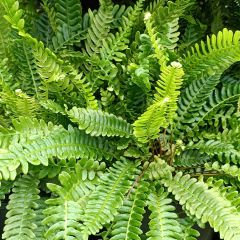
Blechnum spicant - Hard Fern
- Height at maturity 40 cm
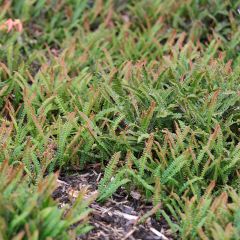
Blechnum penna-marina - Alpine Water Fern
- Height at maturity 20 cm
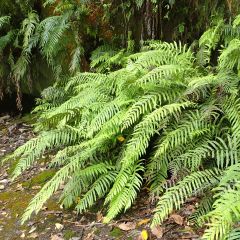
Blechnum novae-zelandiae - Kiwi Hard Fern
- Height at maturity 50 cm
Discover other Blechnum
View all →Available in 2 sizes
Available in 1 sizes
Available in 1 sizes
Available in 1 sizes
Available in 1 sizes
Available in 1 sizes
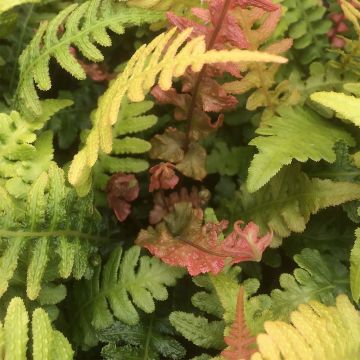
Available in 1 sizes
Available in 1 sizes
Available in 1 sizes
Planting
Where to plant?
Like most ferns, Blechnum thrives in woodland, in the shade of trees and bushes, as this corresponds to its natural habitat. You can create a beautiful natural scene by pairing it with other shade plants. However, Blechnum spicant is capable of tolerating sunlight as long as the soil remains cool.
Blechnum prefers cool soils and humid atmospheres. Therefore, you can place it by a water feature or a small waterfall, although it will also appreciate relatively well-draining soil that does not remain waterlogged in winter. Blechnum enjoys rich, fertile humus-rich soils, such as those found in forests. Don’t hesitate to add well-decomposed compost or leaf mould at planting time to enrich the soil. It also prefers acidic soils. Neutral pH soils will also suit it, but it does not like limestone.
Similarly, Blechnum can be perfectly placed in a shaded rockery, for example, alongside saxifrages and other ferns.
Plan the location according to the species you are growing: Blechnum penna-marina is a small variety that can easily fit into a rockery, but it will tend to spread over time. Blechnum novae-zelandiae grows quite large (up to 1.5 m in spread): choose a location where it will have enough space to develop well. Blechnum spicant, on the other hand, has a relatively modest size, so you should have no trouble finding a spot for it in the garden, and you can also grow it in a pot.
When to plant?
The best times to plant Blechnum are in spring, around April, and autumn, in October. Avoid periods of frost or extreme heat.
How to plant?
- Start by placing your Blechnum in a basin filled with water to rehydrate it.
- Then dig a planting hole two to three times the size of the root ball.
- Add well-decomposed compost, mixing it with the planting soil to enrich the substrate.
- Remove the Blechnum from its pot and place it in the planting hole.
- Fill the hole by replacing soil around it, then firm it down with the palm of your hand.
- All that’s left to do is water generously and optionally mulch with RCW or fallen leaves to keep the soil cool.
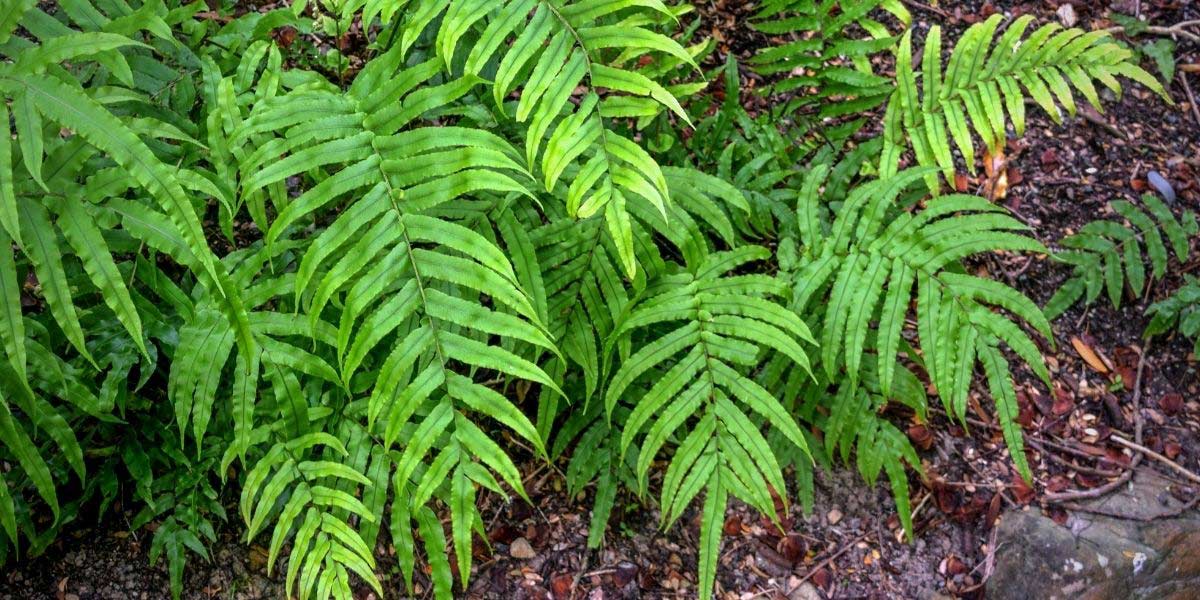
Blechnum novae-zelandiae (photo Krzysztof Golik)
Read also
How to sow fern spores?Care
Like other ferns, Blechnum really requires very little maintenance. We recommend watering in the weeks following planting, then providing occasional watering during dry spells.
You can apply organic mulch, such as RCW (ramial chipped wood) or fallen leaves. Mulching will help keep the soil cool for longer while limiting the growth of adventive plants. Additionally, its gradual decomposition will enrich the soil with humus.
During the growing season, remove any dead or damaged fronds as you see them to tidy up the clumps.
If you are growing Blechnum in a pot, remember to water it regularly, especially in summer, as the substrate dries out more quickly than in open ground.
Like most ferns, Blechnum is very resistant to diseases and pests.
Multiplication
The division of clumps is the best technique for multiplying Blechnum, as sowing spores is much longer and more delicate.
Division of clumps
You can divide the clumps of Blechnum spicant and Blechnum penna-marina in spring.
- Identify a well-developed and spreading clump that forms several tufts of leaves.
- Gently dig it up, ensuring you excavate wide enough not to damage the rootstock and roots.
- If necessary, remove excess soil to clearly expose the rootstock.
- Cut it into several fragments, ensuring each has some roots and fronds.
- Replant immediately, either in the ground or in pots, and water generously.
Sowing spores
You can also collect and sow the spores. They appear in summer, on the underside of the fertile fronds: you can easily recognise these fronds as they are more upright than the others, and the lamina is very narrow. When they are mature, the spores turn brown and detach on their own. They resemble dust, and you can see them fall when shaking the fronds.
Sowing spores is interesting if the Blechnums you have are still small and cannot be divided, allowing you to obtain a large number of seedlings without disturbing the plants already in place in the garden.
It is best to sow them shortly after harvesting, while they are still fresh, as they will germinate more easily. The most favourable time to sow the spores is therefore summer, around August.
- Prepare a light and airy substrate by mixing potting soil and sand, then water it and place it in the microwave for 10 minutes to sterilise.
- Take a seed tray or a transparent Tupperware with a lid. You can also clean and sterilise it, then place the substrate inside.
- Gently scatter the spores on the surface, but do not cover them with the substrate!
- Replace the lid on the seed tray or Tupperware (you can also use cling film). This creates a sterile and moisture-saturated environment.
- Place your sowing in a bright location, but out of direct sunlight!
- Water occasionally by misting with water if you see the substrate drying out.
- After a few months, you will see a fine green film developing on the surface, resembling moss. These are the prothalli: they bear the reproductive organs, and in the presence of moisture, fertilisation can occur, giving rise to new seedlings in the form we know.
- The ferns will develop from these prothalli. Once they are large enough to handle, you can transplant them into individual pots.
To learn more, discover our article “How to sow fern spores?”
Pairing ideas
Blechnum integrates very easily into a woodland garden, as this corresponds to its ecology. Pair it with perennials that enjoy cool, shaded environments, such as Hostas, Polygonatum, Sweet Woodruff, Bluebell, Brunnera macrophylla, Geranium nodosum… Also consider incorporating other ferns, such as Athyrium or Dryopteris. This will create a very natural atmosphere! Discover the stunning Tricyrtis, or Toad Lily, which bears original, purple-spotted flowers.
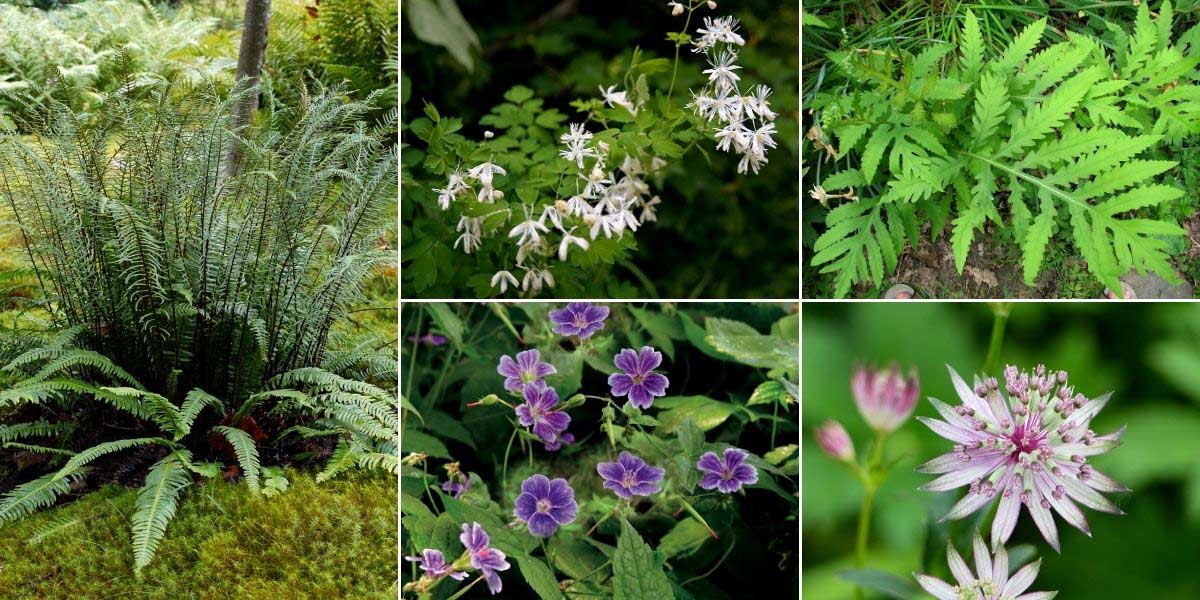
You can create a beautiful woodland scene by pairing Blechnum spicant (photo Drahkrub), Thalictrum aquilegifolium, Onoclea sensibilis, Geranium nodosum ‘Le Clos du Coudray’, and Astrantia major ‘Ruby Star’
Blechnums are also perfect in a shaded rockery. For this situation, we especially recommend Blechnum spicant and Blechnum penna-marina. You can plant alongside them saxifrages, corydales, grasses such as Carex morrowii or Hakonechloa macra, Epimediums, and Ajuga reptans. Optionally, add some ferns like polypodies, Asplenium trichomanes, and scolopendria.
Discover our advice sheet: “10 plants to create a shady rockery”
The Blechnum spicant can also find its place in a graphic and modern garden, with clean lines and muted tones (green, white, chocolate, brown, purple…). Add verticality with horsetails (notably Equisetum hyemale) and bamboos. You can also plant agapanthuses and Alliums, and define the beds with Ophiopogon planiscapus ‘Nigrescens’. You may also add the grass Hakonechloa macra ‘Aureola’, and the fern Athyrium niponicum. For shrubs, consider planting Japanese maples.
The Blechnum novae-zelandiae will easily find its place in an exotic and lush garden. Choose to accompany it with other plants with opulent foliage, such as tree ferns, Matteuccia struthiopteris, banana plants, Astilboides tabularis, Fatsia japonica, Tetrapanax, palms… For more pairing ideas, check out Ingrid’s article on our blog: “10 exotic and hardy plants for a jungle garden”
Useful resources
- Discover our range of Blechnum!
- Our extensive range of ferns, as well as the associated advice sheets
- Fernatic, the French site for fern enthusiasts
- Subscribe!
- Contents
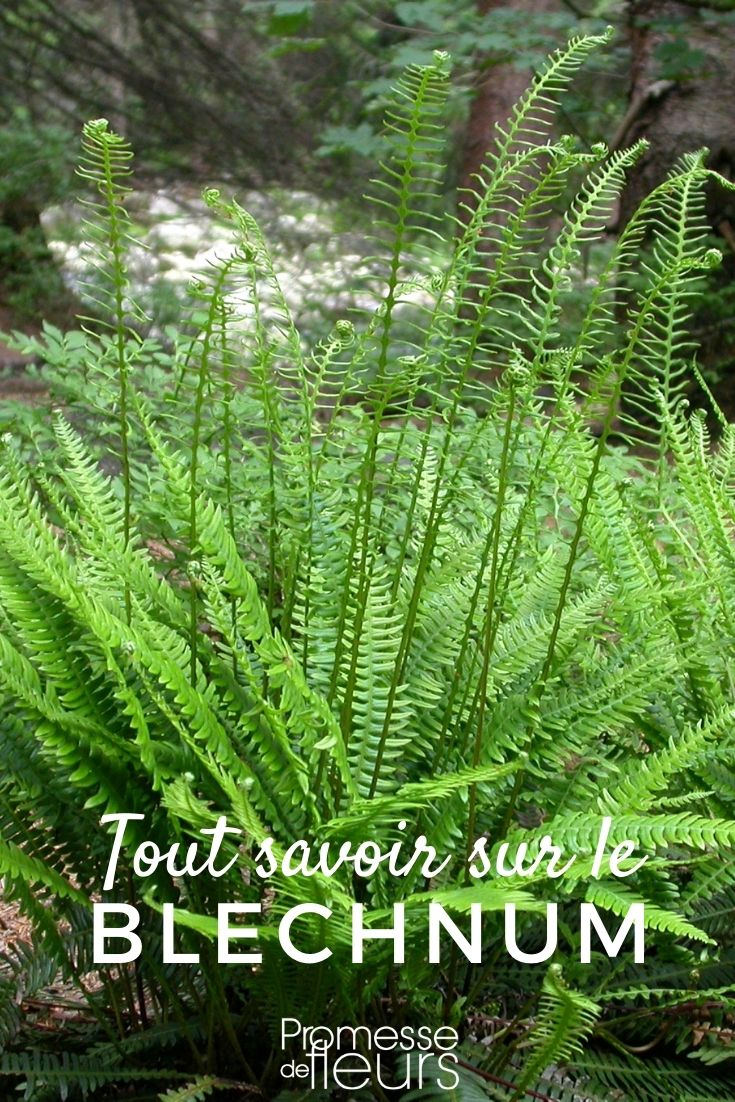

































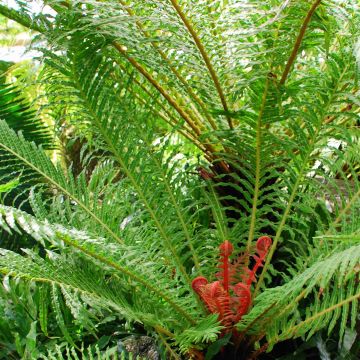
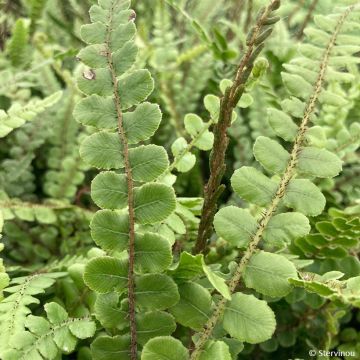
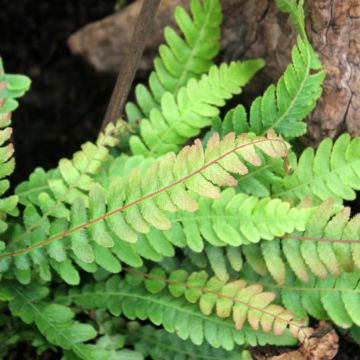

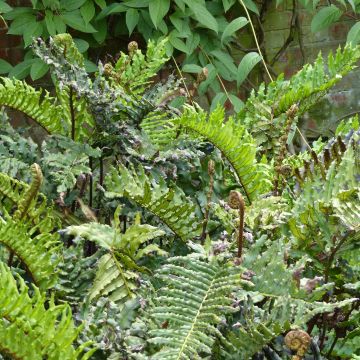
Comments